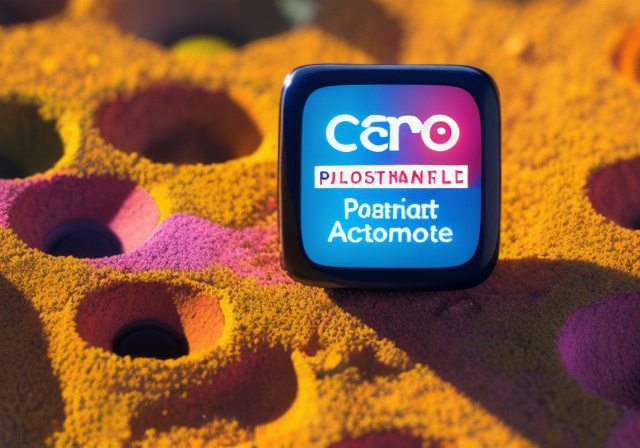What is Microsite Marketing?
Microsite marketing is a strategy that involves using standalone websites, called microsites, to promote specific products or services, or to target a specific audience. These smaller sites are separate from a company’s main website, often designed to be highly interactive and engaging, with features like quizzes, games, and social media integration.
Microsites are typically created for a specific purpose, such as a product launch, a seasonal campaign, or a targeted marketing effort. They allow companies to create a unique online experience that is tailored to the needs and interests of their target audience, without being constrained by the design or content of their main website.
One of the main advantages of microsite marketing is that it allows companies to create highly targeted marketing campaigns that are designed to appeal to specific audiences. For example, a company might create a microsite that is specifically designed to appeal to a younger demographic, with features like interactive games and social media integration.
Microsites can also be used to promote specific products or services, with features like product demonstrations, customer testimonials, and interactive product tours. This allows companies to create a more immersive and engaging online experience for potential customers, which can increase the likelihood of conversion.
Creating Highly Engaging Microsites
One of the key benefits of microsite marketing is the ability to create highly engaging and interactive online experiences for potential customers. This can be achieved through a variety of features and design elements, such as:
- Quizzes: Interactive quizzes can be an effective way to engage potential customers and collect valuable data about their preferences and interests.
- Games: Interactive games can be used to create a fun and engaging online experience that keeps visitors on the site longer.
- Social Media Integration: Integrating social media into a microsite can help to increase engagement and virality, as visitors share their experiences with their friends and followers.
- Product Demonstrations: Interactive product demonstrations can be an effective way to showcase the features and benefits of a product or service, and to increase the likelihood of conversion.
By incorporating these and other design elements into their microsites, companies can create a highly engaging and immersive online experience that is tailored to the needs and interests of their target audience.
The Benefits of Microsite Marketing
Microsite marketing offers a number of benefits for companies looking to promote specific products or services, or to target a specific audience. Some of the key benefits include:
- Increased Engagement: Microsites are designed to be highly engaging and interactive, which can increase the amount of time visitors spend on the site, and the likelihood of conversion.
- Targeted Marketing: Microsites allow companies to create highly targeted marketing campaigns that are tailored to the needs and interests of their target audience.
- Brand Awareness: Microsites can help to increase brand awareness by creating a unique and memorable online experience for potential customers.
- Data Collection: Interactive features like quizzes and product demonstrations can be used to collect valuable data about potential customers and their preferences.
Overall, microsite marketing is a powerful strategy for companies looking to create unique and engaging online experiences that are tailored to the needs and interests of their target audience. By incorporating interactive features and targeted marketing campaigns into their microsites, companies can increase engagement, brand awareness, and the likelihood of conversion.

The Benefits of Microsite Marketing
In today’s crowded online space, it’s becoming increasingly difficult for brands to stand out and capture their audience’s attention. This is where microsite marketing comes in – creating standalone websites that are separate from a company’s main website can help your brand stand out and make a lasting impression on your audience.
Microsites can be designed with a specific purpose in mind, targeting a specific audience or promoting a new product or service. By optimizing your microsite for specific keywords or audiences, you can improve your search engine rankings and drive more targeted traffic to your site. This can ultimately lead to more conversions and a higher return on investment.
Improved Search Engine Rankings
One of the biggest benefits of microsite marketing is the ability to improve your search engine rankings. By creating a microsite that is optimized for specific keywords or phrases, you can increase your chances of appearing at the top of search engine results pages (SERPs) for those keywords. This can drive more targeted traffic to your site, as users searching for those keywords are likely to be interested in your product or service.
Showcasing New Products or Services
Microsites can also be used to showcase new products or services, providing a dedicated space for users to learn more and interact with your brand. By featuring interactive elements like quizzes, games, and social media integration, you can encourage users to engage with your brand and share your microsite with others, increasing your reach and brand awareness.
Shareable Content for Social Media Marketing
Another benefit of microsite marketing is that microsites can be highly shareable, making them a great tool for social media marketing. By creating a microsite that is visually engaging and interactive, you can encourage users to share your content on social media platforms like Facebook, Twitter, and Instagram. This can help increase your reach and exposure, ultimately driving more traffic to your site and increasing conversions.
In conclusion, microsite marketing can be a powerful tool for brands looking to stand out in a crowded online space. By creating standalone websites that are optimized for specific keywords or audiences, showcasing new products or services, and utilizing shareable content for social media marketing, you can improve your search engine rankings, increase your brand awareness, and ultimately drive more targeted traffic to your site.

Additionally, microsites can be cost-effective marketing tools, as they typically require less time and resources to create and manage than a full website. They can also be used to complement your existing website, providing a dedicated space for specific campaigns or promotions without cluttering your main site.
Overall, microsite marketing is a versatile and effective strategy for brands looking to capture their audience’s attention and drive more targeted traffic to their site. By creating engaging and interactive microsites optimized for specific keywords or audiences, brands can improve their search engine rankings, increase their brand awareness, and ultimately drive more conversions and revenue.

How to Create a Successful Microsite
Now that you understand the benefits of microsite marketing, it’s time to create your own. Follow these steps to create a microsite that will capture your audience’s attention and achieve your business goals.
Define Your Goals and Target Audience
Before you start designing your microsite, define your goals and target audience. Determine what you want to achieve with your microsite and who you want to reach. This will help you create a targeted and effective microsite that resonates with your audience.
Choose a Catchy and Memorable Domain Name
Your domain name is the foundation of your microsite. Choose a domain name that is catchy, memorable, and relevant to your brand or campaign. Make sure it’s easy to spell and pronounce to avoid confusion and make it easy for visitors to remember.
Design Your Microsite to Be Visually Appealing and Easy to Navigate
The design of your microsite is crucial to its success. Make sure your microsite is visually appealing and easy to navigate. Use a clean and modern design, with a clear hierarchy of information. Organize your content logically and make sure your visitors can find what they’re looking for quickly and easily.
Include Engaging Content
Your microsite should feature engaging content that resonates with your audience. Use a mix of videos, infographics, and interactive features to keep your visitors engaged and interested. Make sure your content is informative, entertaining, and relevant to your audience’s needs and interests.
Optimize Your Microsite for Search Engines and Mobile Devices
Make sure your microsite is optimized for search engines and mobile devices. Use relevant keywords and meta descriptions to improve your search engine rankings. Ensure your microsite is responsive and mobile-friendly, so it looks great and functions well on any device.
Promote Your Microsite
Once your microsite is live, it’s time to promote it. Use social media, email marketing, and other channels to drive traffic to your microsite. Encourage your visitors to share your microsite with their networks and make it easy for them to do so.
Track Your Results and Make Adjustments
Finally, track your microsite’s performance and make adjustments as needed. Use analytics tools to monitor your traffic, engagement, and conversion rates. Make changes to your microsite to improve its performance and achieve your goals.
By following these steps, you can create a successful microsite that engages your audience and achieves your business goals.

Image source: Pexels
Examples of Successful Microsite Marketing Campaigns
There are many successful microsite marketing campaigns out there, but some stand out more than others. Here are three examples of companies that used microsites to create engaging and effective marketing campaigns:
The Coca-Cola ‘Share a Coke’ campaign
The ‘Share a Coke’ campaign is one of the most successful marketing campaigns of all time, and it all started with a microsite. Coca-Cola created a microsite where customers could personalize Coke bottles with their names, and it took off like wildfire. People started sharing pictures of their personalized Coke bottles on social media, using the hashtag #shareacoke, and the campaign went viral. In just one year, Coca-Cola sold over 250 million personalized Coke bottles, and the campaign received over 500,000 photos shared on social media.
The success of the ‘Share a Coke’ campaign shows the power of personalization and user-generated content. By creating a microsite that allowed customers to personalize their Coke bottles, Coca-Cola was able to create a sense of ownership and community around their brand, which led to increased brand loyalty and sales.

The Old Spice ‘Smell Like a Man, Man’ campaign
The Old Spice ‘Smell Like a Man, Man’ campaign was another successful microsite marketing campaign that went viral. The microsite featured interactive videos and games that humorously showcased the benefits of Old Spice’s products. The campaign was a hit with both men and women, and it led to a significant increase in sales for Old Spice.
The success of the Old Spice campaign shows the power of humor and interactivity in marketing. By creating a microsite that was both entertaining and informative, Old Spice was able to engage with its audience and create a memorable brand experience.

The Adobe ‘Experience Business’ campaign
The Adobe ‘Experience Business’ campaign was designed to showcase Adobe’s products and services in a visually engaging way. The microsite featured stunning visuals and interactive elements that demonstrated how Adobe’s products could help businesses improve their customer experiences. The campaign was a hit with both existing and potential customers, and it helped to position Adobe as a leader in the industry.
The success of the Adobe campaign shows the power of visual storytelling in marketing. By creating a microsite that was visually stunning and interactive, Adobe was able to showcase its products in a way that was both informative and engaging.

Conclusion
Microsite marketing can be a powerful tool for boosting your brand’s online presence and standing out in a crowded market. With careful planning and execution, a well-designed microsite can help you reach new audiences, promote specific products or services, and drive more targeted traffic to your site. By using interactive elements, personalized content, and visually engaging design, you can create a memorable experience for your customers that sets you apart from the competition.
Personalization is Key
One of the most successful strategies for microsite marketing is personalization. The Coca-Cola ‘Share a Coke’ campaign is a great example of this. By creating personalized Coke bottles with customers’ names on them, the brand encouraged customers to share their experiences on social media. This not only created a buzz around the product but also helped to establish an emotional connection between the brand and its customers.
Humor Goes a Long Way
The Old Spice ‘Smell Like a Man, Man’ campaign is another example of a successful microsite marketing campaign. By creating a humorous microsite featuring interactive videos and games, the brand was able to generate a lot of engagement and interest. The campaign went viral, with millions of views on YouTube and social media. Humor is a great way to connect with your audience and make your brand more relatable.
Visuals Matter
The Adobe ‘Experience Business’ campaign used a microsite to showcase their products and services in a visually engaging way. The site featured stunning visuals, interactive elements, and a user-friendly interface. By using visuals to tell a story and showcase their products, Adobe was able to create a memorable experience for their customers and stand out in a crowded market.
Overall, microsite marketing can be a valuable addition to your marketing strategy. By creating a personalized, engaging, and visually appealing experience for your customers, you can boost your brand’s online presence and drive more targeted traffic to your site.

“A well-designed microsite can help you reach new audiences, promote specific products or services, and drive more targeted traffic to your site.”
Remember, the key to success with microsite marketing is careful planning and execution. Take the time to research your audience, create a personalized experience, and use engaging visuals and interactive elements to capture their attention. By doing so, you can create a memorable experience for your customers and drive more business to your brand.







